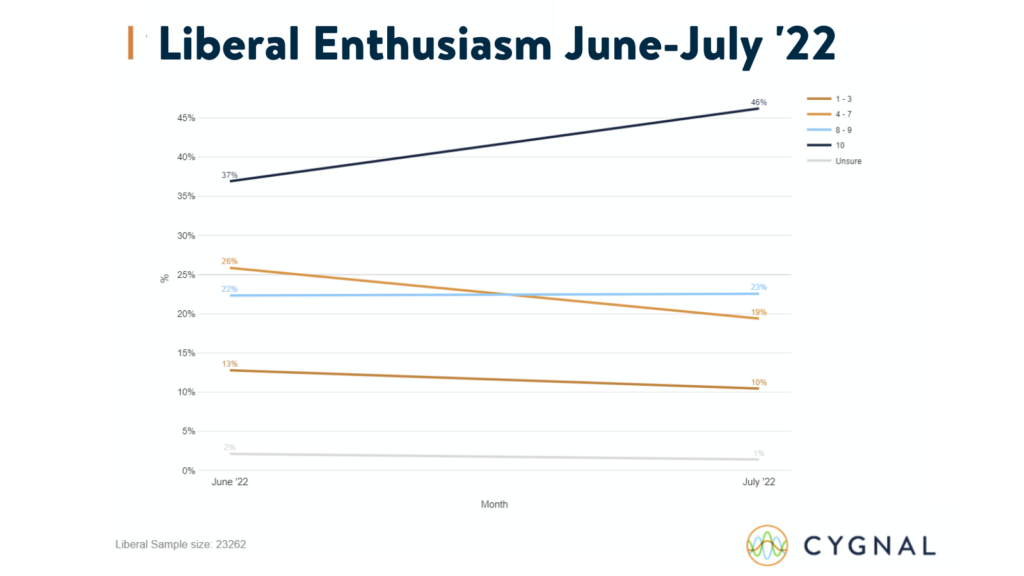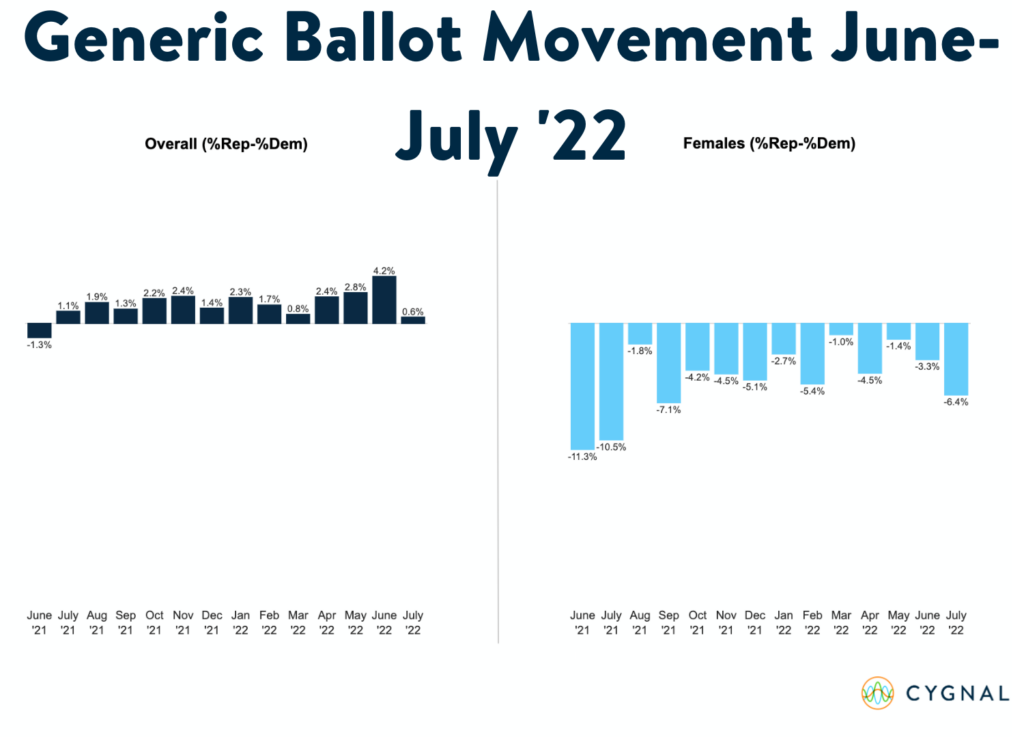
On June 24th, 2022, the Supreme Court issued its ruling in Dobbs v. Jackson Women’s Health Organization, overruling Roe v. Wade and the federally protected right to an abortion. Since then, there has been a decidedly significant shift in the political environment.

Prior to the ruling in June, things looked rosy for Republicans. In our National Voter Trends survey, the inflation issue had reached its highest level of salience, with 47% of voters selecting it as their top issue. Further, economic confidence was at an all-time low, and President Biden was getting the blame for all of it. As a result, the generic ballot had reached a new high.
The week after the ruling, we saw an immediate impact in our polling results. While the specifics of these polls are confidential, it was among the most striking shifts we’ve ever observed at Cygnal. Across the country, we observed the following shifts:
- Young women were responding to our surveys at much higher rates and voting for Democratic candidates.
- Democrats gained a party loyalty advantage in most polls – meaning they voted for their party’s generic candidate at a greater rate than Republicans.
- Previously trending Republican, Independents shifted toward Democrats.
In our July National Voter Trends Survey, we saw the full implications of these changes. Even as concern about inflation waned, pessimism about the direction of the country spiked – especially among women. On the generic ballot, Democrats gained substantial ground with women and Independents, and the margin shifted significantly from R+4 to R+1. While it’s still a decidedly better national environment for Republican candidates than 2020 or 2018, it’s far from the “Red Wave” most observers have come to expect.
Earlier this month, these observations were validated as Kansas voters stampeded to the polls to oppose a constitutional amendment that would have curtailed abortion rights in the state.
In a midterm with a Democratic President, history tells us that it will be a good year for Republicans. The last four midterms – 2018, 2014, 2010, and 2006 – have all been referenda on the sitting President resulting in major victories for the opposing party. But 2022 presents a unique circumstance: with the Dobbs ruling, the party out of power has achieved a major policy win with immediate impact.

With three months to go, we’re about to find out whether the 2022 midterms will break the mold. Our graphs are easy to read and interpret. The effectiveness of a message runs along the X-axis of the graph, and it is represented by a color coordinated bubble.
The effectiveness of a message is in direct correlation to its ability to change voter opinion.
The more successful a message is, the more voters it will ultimately persuade. The farther to the right a message is on the graph indicates the persuasion power of a message. If your message registers on the farthest right of the graph, you have struck proverbial gold. The Y-axis represents the net impact of a message. The higher a message is along the Y-axis correlates to the popularity of a message. In layman’s terms, the closer to the top of the graph indicates the broader the appeal of that message. The closer to the bottom indicates a message more likely to be a contrapositive and could have drag, which would flip opinion against you.
The final thing to consider on your message map is the size of the message bubble. The larger the bubble, the more intense voter responses were to the message. Larger circles reflect a high concentration of voters who chose much more/less likely. This is used as a comparative tool, so if two messages have a similar effect, seeing which message elicits a more intense response could be helpful in budget constraint scenarios.
All messages are not created equal.
Do not fall victim to the hope and pray method of messaging in which you throw everything at the wall, hoping something will stick. You will have wasted your money and opportunity to persuade the segment of the constituency that would have put your candidate over-the-top. Test your messages, zone in on your audience, and shape the narrative around your campaign. Trust Cygnal to provide you with the key to unlocking the voters on the margins.

